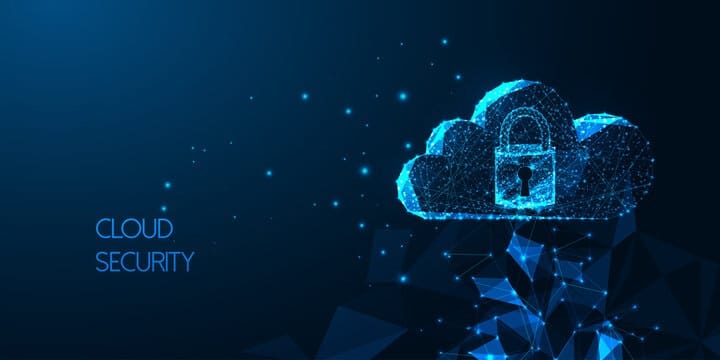A Detailed Overview of Cloud Security Fundamentals
As organizations increasingly move their data and operations to the cloud, ensuring cloud security has become a top priority. Cloud security involves a set of policies, technologies, and practices designed to protect cloud-based systems, data, and applications from cyber threats, data breaches, and unauthorized access. Understanding the fundamentals of cloud security is essential for businesses to securely leverage the power of cloud computing while minimizing risks.
1. Cloud Security Model
The Cloud Security Model defines the responsibilities of both cloud service providers (CSPs) and customers in securing cloud-based systems. Generally, the model follows a shared responsibility framework:
- Cloud Service Provider (CSP): The CSP is responsible for securing the infrastructure that supports cloud services, including the physical security of data centers, network security, hardware, and virtualization layers. For instance, the CSP ensures that the cloud environment is free from physical threats and that the underlying cloud infrastructure is secure.
- Customer: The customer is responsible for securing their data, applications, and identity management in the cloud. This includes setting up access controls, encrypting sensitive data, and ensuring the security of applications hosted on the cloud.
Different types of cloud services (IaaS, PaaS, SaaS) have varying levels of responsibility for both the provider and the customer. In IaaS, for example, the customer has more control over the infrastructure and is responsible for securing the operating system and applications, whereas in SaaS, the provider handles more of the security.
2. Confidentiality, Integrity, and Availability (CIA Triad)
The core principles of cybersecurity, known as the CIA Triad, are equally important in cloud security:
- Confidentiality: Ensuring that data is kept confidential and only accessible to authorized users. This includes encryption of data in transit and at rest, along with access controls to prevent unauthorized access.
- Integrity: Ensuring the accuracy and reliability of data by preventing unauthorized alterations. Techniques such as checksums, hashing, and digital signatures can help preserve the integrity of cloud-hosted data.
- Availability: Ensuring that cloud services and data are accessible when needed by users. This includes implementing redundancy, backup systems, and disaster recovery plans to minimize downtime and ensure that services remain operational in case of failure.
3. Data Encryption
One of the most critical aspects of cloud security is data encryption. Encryption protects data from unauthorized access by converting it into unreadable code, which can only be decoded with an encryption key. Key aspects of cloud data encryption include:
- Encryption at Rest: Encrypting stored data in cloud databases, file storage, or other systems to protect it when it’s not being actively used or transmitted.
- Encryption in Transit: Ensuring that data is encrypted when transmitted between the cloud service and users or other systems, protecting it from interception during transit. This typically uses protocols such as SSL/TLS for secure communication.
- Key Management: Managing encryption keys is essential to maintaining the security of encrypted data. Customers may choose to manage their own encryption keys or rely on the CSP to handle them, depending on the service model.
4. Identity and Access Management (IAM)
Identity and Access Management (IAM) is a fundamental component of cloud security, focusing on managing user identities and controlling access to cloud resources. Best practices for IAM in the cloud include:
- Multi-Factor Authentication (MFA): Requiring multiple forms of verification (e.g., password plus a fingerprint or one-time code) to enhance the security of user accounts.
- Role-Based Access Control (RBAC): Assigning access permissions based on the roles of users within the organization. This ensures that employees have the minimum necessary permissions to perform their job functions.
- Least Privilege: Enforcing the principle of least privilege means providing users with the lowest level of access necessary for them to complete their tasks, reducing the risk of insider threats or accidental data exposure.
- Single Sign-On (SSO): Enabling users to access multiple cloud applications with a single set of credentials, improving security and user experience.
5. Network Security
Network security in the cloud focuses on protecting the network infrastructure from unauthorized access, data interception, and other cyber threats. This includes:
- Firewalls: Virtual firewalls help control incoming and outgoing traffic to cloud resources, blocking malicious traffic and allowing only authorized connections.
- Virtual Private Network (VPN): Using a VPN can ensure that data traveling to and from the cloud is encrypted and secure, particularly when accessing the cloud from remote locations.
- Intrusion Detection and Prevention Systems (IDPS): Monitoring cloud environments for signs of suspicious activity and automatically blocking any detected threats.
- DDoS Protection: Distributed Denial of Service (DDoS) attacks aim to overwhelm cloud servers with traffic. Cloud providers offer DDoS protection services that help prevent such attacks from disrupting services.
6. Compliance and Legal Considerations
Compliance with industry standards, regulations, and legal requirements is critical when handling sensitive data in the cloud. Some key compliance frameworks and regulations include:
- General Data Protection Regulation (GDPR): The GDPR sets requirements for data protection and privacy for organizations operating in the European Union, impacting how businesses store, process, and handle personal data.
- Health Insurance Portability and Accountability Act (HIPAA): For healthcare organizations, HIPAA regulates the secure storage and transmission of patient data in the cloud.
- Federal Risk and Authorization Management Program (FedRAMP): FedRAMP is a government standard for securing cloud services used by federal agencies in the U.S.
- Service Level Agreements (SLAs): Cloud providers should offer clear SLAs that define their security and compliance responsibilities. These agreements help customers understand the provider’s commitment to security and what protections are in place.
7. Backup and Disaster Recovery
Cloud environments must be designed for resilience and business continuity. Ensuring that data is properly backed up and that disaster recovery plans are in place is essential for minimizing downtime and preventing data loss. Key considerations include:
- Regular Backups: Implementing automated, regular backups to ensure that data can be restored in the event of a disaster or system failure.
- Geographic Redundancy: Storing backup data in multiple geographic locations to prevent loss in the event of localized disasters such as earthquakes or fires.
- Disaster Recovery (DR) Planning: Creating a detailed disaster recovery plan to quickly restore cloud services and operations after an outage, including clear recovery time objectives (RTO) and recovery point objectives (RPO).
8. Monitoring and Incident Response
Continuous monitoring is essential to detecting threats and vulnerabilities in the cloud. Security Information and Event Management (SIEM) systems aggregate and analyze data from various sources, providing real-time alerts about potential security incidents.
Additionally, organizations should have a detailed incident response plan to handle any breaches, data loss, or other security events. This includes identifying the issue, containing the damage, and restoring services as quickly as possible.
9. Third-Party Risk Management
When leveraging cloud services, businesses often rely on third-party vendors for software and infrastructure. Ensuring that these third-party providers have appropriate security measures in place is essential for managing supply chain risks. Regular assessments of third-party vendors, audits, and security reviews can help reduce vulnerabilities introduced by external partners.
Conclusion
Cloud security is a multi-faceted discipline that requires a comprehensive approach to protect systems, data, and applications from evolving cyber threats. By focusing on core principles such as data encryption, identity and access management, compliance, and regular monitoring, businesses can ensure a secure cloud environment that enables them to take full advantage of the flexibility and scalability the cloud offers. With the right security practices in place, organizations can confidently operate in the cloud while minimizing risk and protecting valuable assets.




Leave a Reply